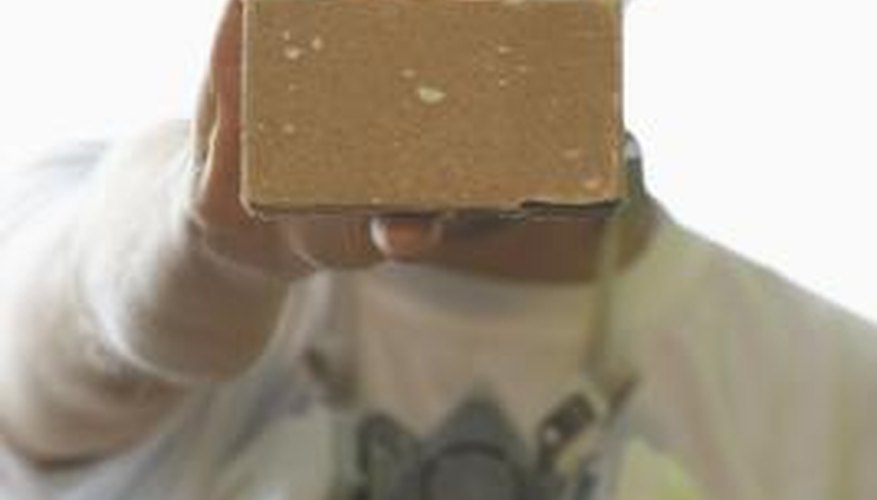Textured or embossed wallpaper adds definition and dimension to a wall; however, when it is time for a change, removing the wallpaper may be difficult. Consider covering the wallpaper with several skim coats of plaster to hide the textured effect. The project will take several days to complete -- plan for a minimum of one week to complete the task.
Place clean dust sheets on the ground to protect and cover flooring. Remove all electrical sockets and plug covers with a screwdriver. Ensure the wallpaper is clean by wiping the area with a clean sponge. Apply 2-inch painter's tape to the ceiling, walls and other adjoining areas where plaster should be avoided.
- Textured or embossed wallpaper adds definition and dimension to a wall; however, when it is time for a change, removing the wallpaper may be difficult.
- Place clean dust sheets on the ground to protect and cover flooring.
Apply a small amount of lightweight joint compound to a trowel using a putty knife. Hold the drywall trowel at a 45-degree angle and lightly skim the wallpaper surface with an even coat. Ensure the plaster compound is not more than 1/4 inch thick. Continue to add plaster to the trowel and skim the entire surface. Allow the plaster to dry 24 hours.
Sand the dry plaster with a sanding sponge to remove loose plaster. Wipe the surface with a tack cloth after sanding. Apply a second coat of plaster to the area for additional coverage. Allow to dry 24 hours. Continue to add thin plaster layers until the textured wallpaper is covered.
- Apply a small amount of lightweight joint compound to a trowel using a putty knife.
- Apply a second coat of plaster to the area for additional coverage.
Apply a latex primer to the surface using a smooth nap roller. Roll the primer in long vertical strokes covering the entire surface. Use a trim brush to apply primer to the perimeter of the wall's surface, where the roller cannot reach. Allow to dry four to six hours.
Paint the walls a coordinating colour using latex paint. Use a smooth nap roller and roll the paint onto the surface similar to the method used to apply the primer. More than one coat of paint may be necessary for even coverage.
- Apply a latex primer to the surface using a smooth nap roller.
- Use a smooth nap roller and roll the paint onto the surface similar to the method used to apply the primer.
TIP
Wear gloves to protect hands and skin from plaster and paint while completing the project. Open doors and windows for additional circulation. Clean drywall trowel with a wet rag periodically to remove build-up and keep dry plaster from forming on the trowel.
